Buzzard reflections on Space Shuttle
Sent from my iPad
From: National Geographic <ng@email.nationalgeographic.com>
Date: September 14, 2020 at 2:21:34 PM CDT
To: bobbygmartin1938@gmail.com
Subject: HISTORY: How the U.S. battled catastrophic wildfires—and on-the-ground hindrances
Reply-To: "ng@email.nationalgeographic.com" <ng@email.nationalgeographic.com>
National Geographic | National Geographic A Caananite mystery solved, the bloody birth of the metric system, Harry Belafonte's 'Tonight Show'
HISTORY VIEW ONLINE

TODAY'S BIG TOPIC:
HOW THE U.S. BATTLED PAST WILDFIRE CATASTROPHES
Monday, September 14, 2020
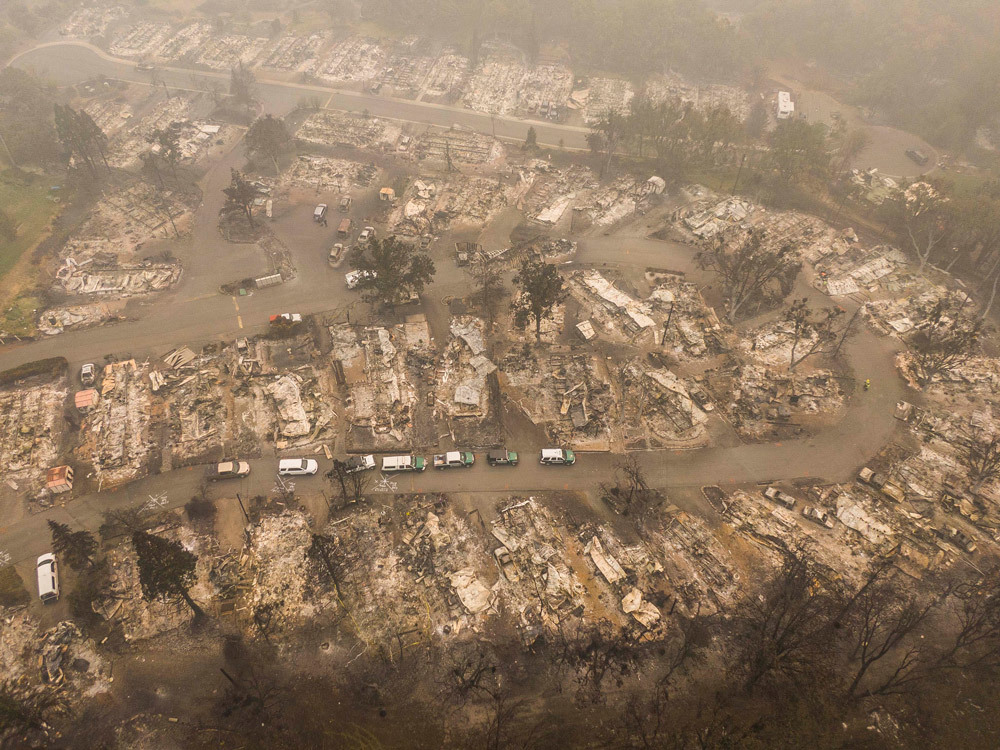
PHOTOGRAPH BY DAVID RYDER, GETTY IMAGES
By Debra Adams Simmons, HISTORY Executive Editor
The idea of facing rumor-mongering, death-risking, anti-government activists is nothing new to forest rangers and law enforcement officers trying to save lives amid today's catastrophic wildfires in the West.
Mobs arose against forest rangers ahead of the 1910 "Big Burn," which charred three million acres. A forest ranger was murdered and the forest chief hanged in effigy in a western town. Years before the blaze, a conservation-minded president, Theodore Roosevelt, faced political foes who wanted to chop down the forests in the West before fire touched them, who saw woods as little more than potential railroad ties, according to Timothy Egan's The Big Burn, a history of the catastrophe and the early days of the Forest Service's embattled founding.
That history, and America's ability to transcend the crisis, is worth remembering as misinformation complicates efforts to fight today's even bigger blazes. (Above, emergency workers at a mobile home complex destroyed Friday by a wildfire in Ashland, Oregon.)
In a year when COVID-19 has already upset nearly everything about American life, sweeping wildfires across 3.1 million acres in California, more than a million acres in Oregon, and 600,000 acres in Washington have created another historic disaster. Described as "apocalyptic" and as a "once-in-a-generation" event, fires and thick smoke have reduced the regions's air quality to the worst in the world.
"I imagine this is a bit of what drowning feels like," author Rebecca Skloot tweeted on Sunday. "Your body reflexively pulling a substance into its lungs over and over and hoping to find any bits of oxygen."
Thousands of homes have been destroyed and many people, literally, are running for their lives. Others are trapped inside their homes because the air outside is too thick to breathe. The air inside is only marginally better. "My eyes were burning throat hurting, headache piercing," Skloot, the author of The Immortal Life of Henrietta Lacks, wrote from Portland. "I can't overstate how toxic this is. This is INDOORS. No living creature should ever breathe this."
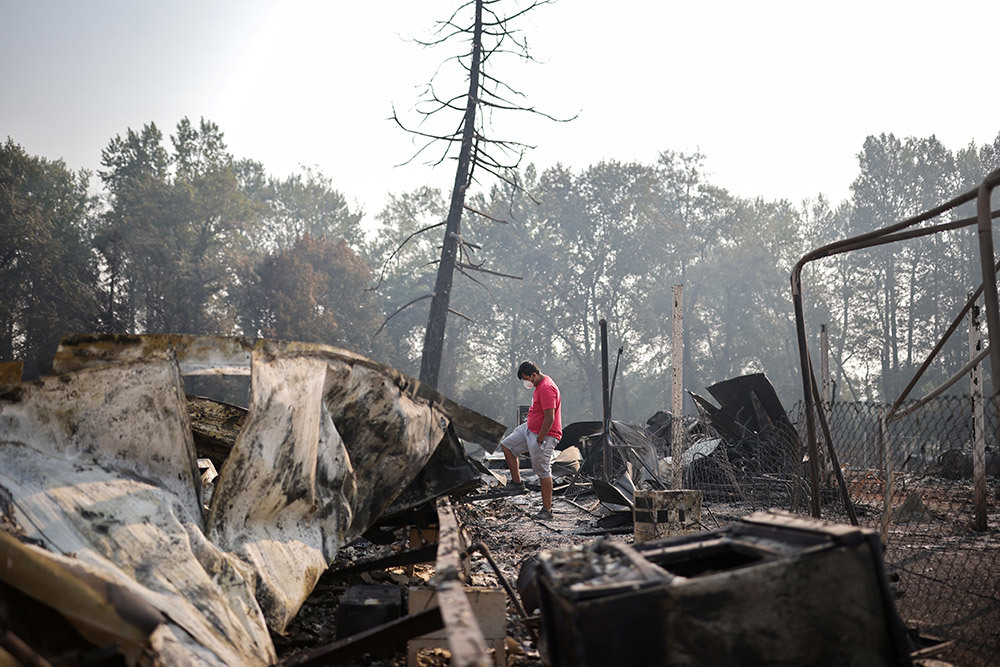
As of this afternoon, more than 30 fires were still burning in Oregon and the air is so thick in places you can barely see in front of you. Nat Geo's Nina Strochlic, who drove across the state on Friday and again for seven hours along the Oregon coast Sunday, was struck by how quickly smoke enveloped the state.
"The skies were clear where I was and it was hard to fathom that the rest of the state couldn't breathe," Strochlic says. "And then suddenly the air was yellow and thick. I only got out of the car once but my clothes still reeked of smoke days later from those 10 minutes outside." (Above, a man inspecting a wildfire-destroyed neighborhood of Phoenix, Oregon on Thursday. Below, in Portland, a lone paddleboarder on the Willamette River despite heavy smoke on Saturday.)
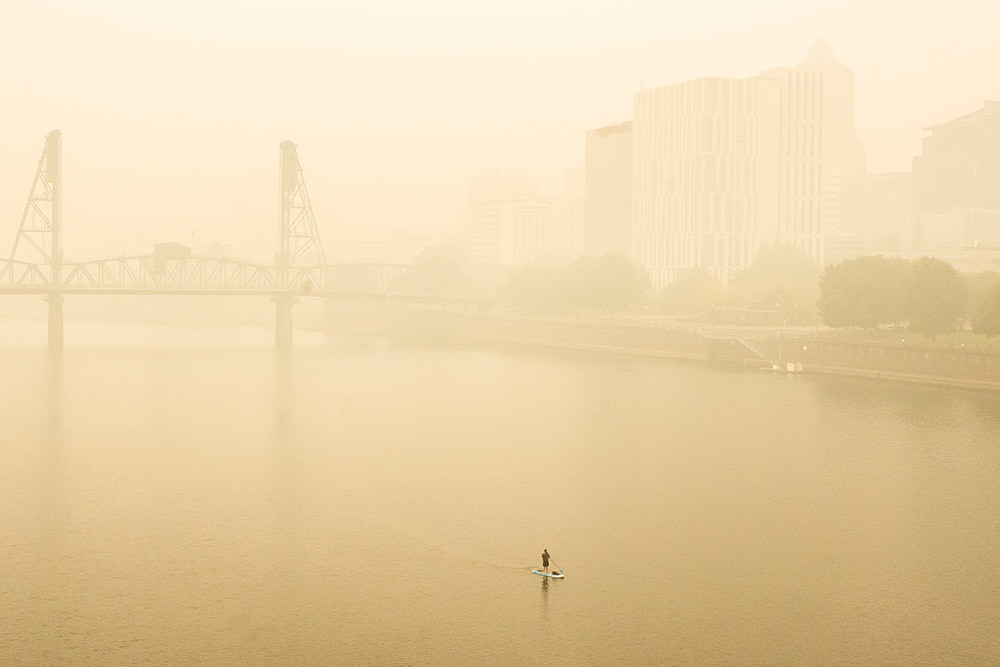
PHOTOGRAPH BY NATHAN HOWARD, GETTY IMAGES
Even before the fires broke out, we've shown the reasons behind increased wildfires in the West, from a tree-destroying beetle to drought to heightened settlement to a pileup of brush in the forests. Climate, too, has a role in events that have changed the land forever.
Our reporters and photographers will be following this historic story intensively in the days ahead. Historians note: During the 1910 wildfires, Roosevelt, then an ex-president, used the damage to campaign for a stronger Forest Service to protect America—and that happened, for a time.
Do you get this newsletter daily? If not, sign up here or forward to a friend.
TODAY IN A MINUTE
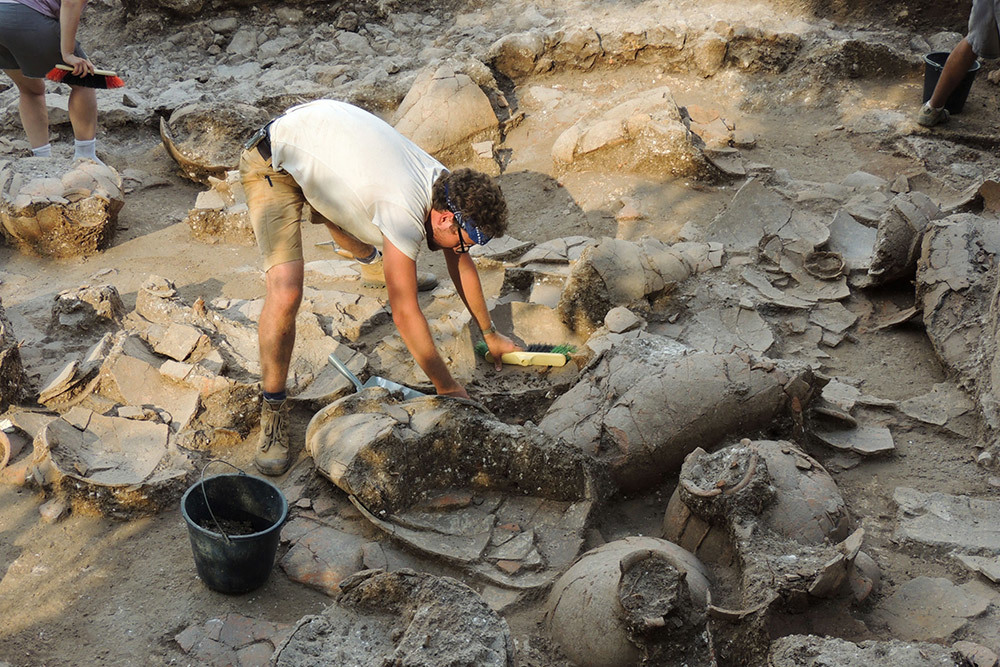
PHOTOGRAPH BY ERIC H. CLINE
A long-ago mystery, solved? Researchers say they have figured out why a massive palace in present-day northern Israel suddenly was abandoned 3,700-some years ago. Archaeologists at first thought a trench running through the ruins of Canaanite palace at Tel Kabri came from tanks (a major battle in the 1948 Arab-Israeli war took place across the street), but Nat Geo's Kristin Romey outlines the steps that led to their latest finding. A quake in the tectonically active area was the culprit, she writes. Above, archaeological team member Zach Dunseth excavates a storage room of wine jars in the Canaanite palace in 2013.
Messing with Korea: Japan's 1910-45 occupation of Korea left generations of Koreans with uncertain command of their ancestral language, writes Alexander Chee, whose own grandfather, a South Korean nationalist, once confessed to dreaming in Japanese. "As your Korean name connects you to your ancestors, changing that name meant losing them, too. Many Koreans took their lives rather than change their names," Chee writes for the New York Times.
A GPS of Earth for the ages? That's how Nat Geo's Nadia Drake describes a new map that could help beings in space find their way to Earth. A half century ago, Nadia's dad, astronomer Frank Drake, helped with a map that NASA launched into space in 1972. The new map by astronomer Scott Ransom adds characteristics that will remain after current visual cues, such a star formations, change positions. National Geographic subscribers can read more here.

PHOTOGRAPH BY CHERISS MAY, REUTERS
Art atop art: St. John's Church, just steps from the White House, boarded up its stained-glass windows during protests. On that plywood, adorning one of America's most famous churches, 16 artists have painted messages of peace and love. The youngest, Senia Cade (pictured above), illustrated racial unity in a tough time. "I can use a paintbrush to send a powerful message," Cade tells Rachel Jones for Nat Geo.
The week Tonight got personal: A new documentary examines five nights in 1968 when America's leading talk show turned the mic over to guests who included the Rev. Martin Luther King, Jr., Aretha Franklin, Sen. Robert F. Kennedy, and Buffy Sainte-Marie. "Although largely forgotten, it was an astonishing moment in which Black culture burst forth on a show and time slot that was typically treated as a lighthearted prelude to bedtime," the Washington Post's Hank Stuever wrote in his review of The Sit-In: Harry Belafonte Hosts the Tonight Show.
INSTAGRAM PHOTO OF THE DAY
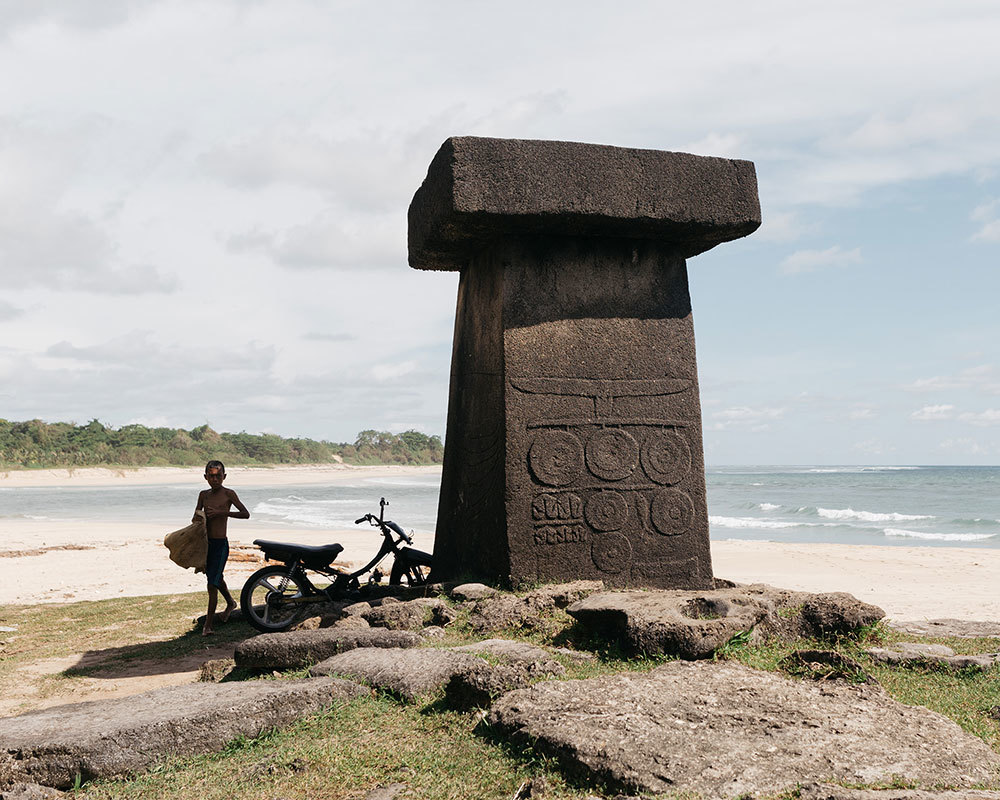
PHOTOGRAPH BY MUHAMMAD FADLI, @MFIMAGES
Beyond Stonehenge: The Indonesian island of Sumba is home to one of the last surviving megalithic cultures on the planet. The term megalith was first used for Stonehenge, to describe the stone edifices, often used for worship. Photographer Muhammad Fadli took this image of a sculptured megalith at the beach of Ratenggaro in southwestern Sumba.
Related: Uncovering the true Indonesia
Not among our 145 million Instagram followers? Follow us now!
THE BIG TAKEAWAY

PHOTOGRAPH BY GARETH CATTERMOLE, GETTY IMAGES/DISNEY
Learning fast: For 10-year-old William Ryan Cook, it has been a cruel summer, capped by the loss of actor Chadwick Boseman (above), who played the Black Panther and another of William's heroes, baseball trailblazer Jackie Robinson. He's not alone in feeling loss, Alison Bethel McKenzie writes for Nat Geo. "They are learning lessons faster than we did," says his grandmother, Karen James. The Black Panther was "a symbol of excellence that all children could aspire to be, but especially for children of color," says psychologist Roselyn Aker-Black. It seems to William's mom, Patricia Cook, that she has been delivering bad news all year. "There are all these things happening—George Floyd and then Jacob Blake and they are going back to school and everything is in upheaval. Black kids are catching [COVID-19] now, and then they lose the Black Panther? Geez."
IN A FEW WORDS

Even in a pandemic, even in grief, I found myself commanded to amplify the voices of the dead that sing to me, from their boat to my boat, on the sea of time.
Jesmyn Ward Novelist; from A Personal Tragedy, Followed by Pandemic
DID A FRIEND FORWARD THIS TO YOU?
On Tuesday, George Stone covers travel. If you're not a subscriber, sign up here to also get Victoria Jaggard on science, Rachael Bale on animal news, and Whitney Johnson on photography.
LAST GLIMPSE
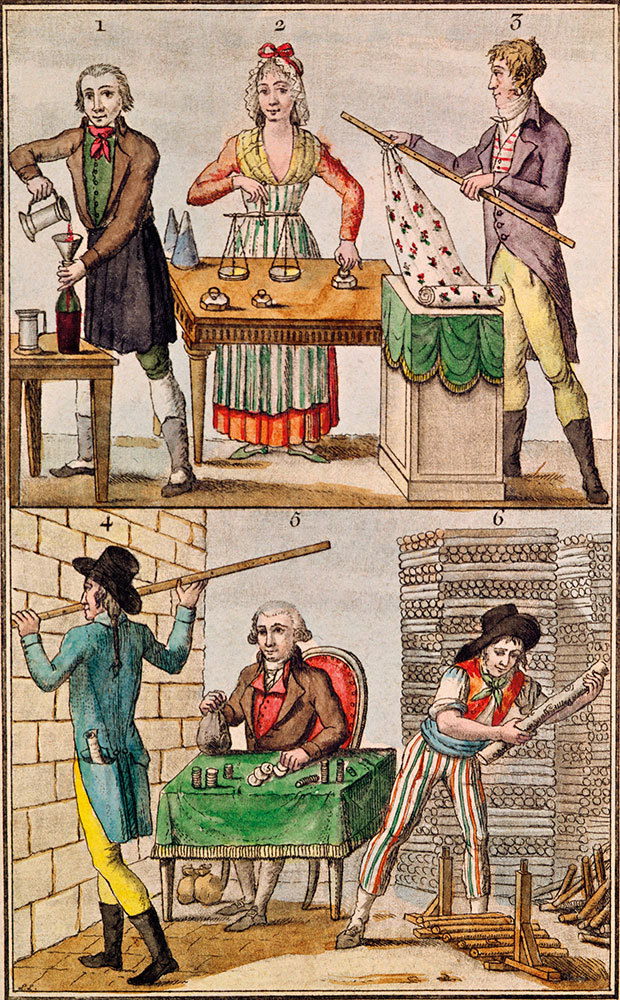
BRIDGEMAN/ACI
Who knew? We think of guillotines and Les Misérables. But a big part of the French Revolution was overthrowing the nobility's ... feudal control of weights and measures. Early revolutionary sympathizer Marquis de Condorcet said only a universal measuring system would allow people to be "really equal in rights ... really free." While revolution raged, the metric system was born, Nat Geo's History magazine reports. And what of its aristocratic founder? Oh, the revolutionaries turned against him, and he died in prison. (Above, detail from a 1795 engraving depicting people using the metric system.)
Subscriber exclusive: Toppling a king—and developing the metric system
This newsletter has been curated and edited by David Beard, and Jen Tse has selected the photos. Have an idea or a link? We'd love to hear from you at david.beard@natgeo.com. Thanks for reading, and happy trails.
SHOP DONATE SUBSCRIBE TRAVEL



Clicking on the Facebook, Twitter, Instagram, and National Geographic Channel links will take you away from our National Geographic Partners site where different terms of use and privacy policy apply.
This email was sent to: bobbygmartin1938@gmail.com. Please do not reply to this email as this address is not monitored.
This email contains an advertisement from:
National Geographic | 1145 17th Street, N.W. | Washington, D.C. 20036
You are receiving this email because you elected to receive marketing communications from National Geographic under the terms of our Privacy Policy.
Manage all types of email preferences with National Geographic Partners.
Unsubscribe from this type of email.
If you reside in the EU/European Economic Area and wish to exercise all other data subject rights, click here.
© 2020 National Geographic Partners, LLC, All rights reserved.//